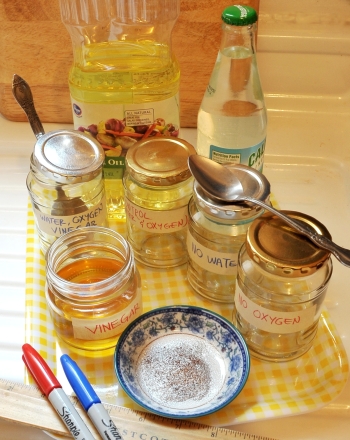Descripción

When you hear the term “chemical reaction”, you might think of scientists in white lab coats mixing dark powders to create explosions. Maybe you think of the flurry of bubbles you saw when you mixed baking soda and vinegar in kindergarten. You probably don’t think of your bicycle rusting after you leaving it out in the rain—but rust is indeed the result of a chemical reaction!A chemical reaction happens when one or more different substances is changed into something else. For instance, when baking soda is combined with vinegar, carbon dioxide gas—a new substance—is created. In a chemical reaction, our starting substances are called the reactants; the substances at the end are called products.Corrosion is the chemical reaction where metals break down slowly because of other elements in their environment.. Rusting, a well known example of corrosion, is the breakdown of the metal iron. The reactants of this chemical reaction are iron, water, and oxygen, and the product is hydrated iron oxide, better known as rust. Rust, unlike iron, is crumbly, orange, and pretty much useless for building things. In this experiment, you’ll discover what kind of conditions help rust form or prevent it from forming at all, and why.
It is an educational content by education.com.
By clicking on the title of this resource, you will be redirected to the content. If you want to download the project, you just have to join the website, which now is for FREE.
Autores
Autor Beth Touchette
Categorias Ficha para imprimir, 8-10 años, Experimento/Práctica, Química, Science Fair - Education, Inglés add
Tag add
Data de publicação 27 / 08 / 2020
Licença Respeita a licença original do recurso.
Deseja fazer um comentário? Iniciar sessão





Comentários
mode_comment0